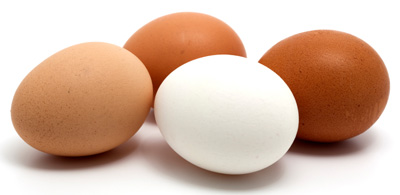
|
Egg Popularity
Around 1915
Around 1915
consumers starting preferring white eggs over brown eggs. The preference
changed back to brown in the early 1990s. So for about 75 years white eggs
were more popular.
Hens with white earlobes lay white eggs. Hens with red ear lobes lay brown
eggs.
|
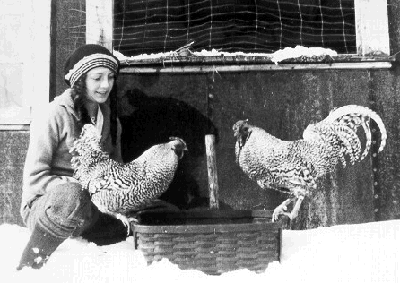
| Dominique
Stock in 1915
This photo was taken at A.Q. Carter's farm in 1915. Mr Carter wrote many
articles about Dominiques and was responsible for getting their correct
description in the "Standard of Perfection" breed book.
"The egg shipment arrived this morning on schedule and is safe and sound. Incubator is loaded and we anxiously await our hatch. I will keep you posted and send pictures when they arrive. My husband's grandmother raised Dominiques, and they hold fond memories for him. My grandson is very excited to see chicks."
-Laura, New Tazewell, Tennessee
|
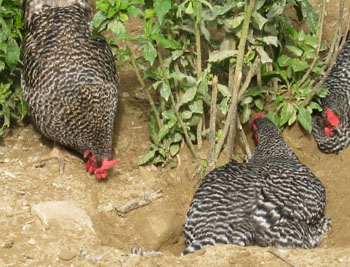
| Popular
Until 1920s
The Dominique
was popular until the 1920s but then interest decreased. The breed survived
during the Great Depression of the 1930s because it was hardy and easy to
keep. It was a great survival chicken.
This photo is some Dominique hens enjoying a dust bath they created.
|
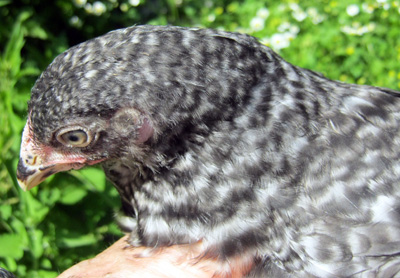
| Factory
Farming Reduced Dominiques
By the end
of World War II in 1945, as the large-scale poultry industry began to increase,
the Dominique again declined. Small mom and pop farms decreased as food
commercialization increased.
This photo is a 7-week-old Dominique pullet.
|
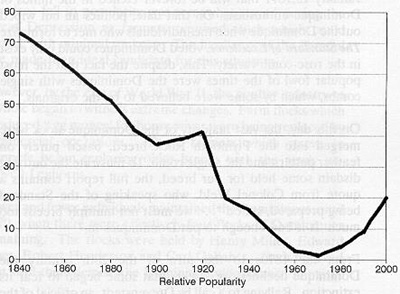
| Almost
Extinct by 1970
By 1970 there
were only four known flocks owned by: Henry Miller, Edward Uber, Robert
Henderson, and Carl Gallaher.
According to reports by the American Livestock Breeds Conservancy, from
1983 until 2006 Dominiques steadily increased in numbers.
"There are more Dominiques around now than there have been in fifty years."
-Carl Gallaher, expert breeder, 1997
This graph shows the relative popularity of the Dominique from 1840 to 2000.
|
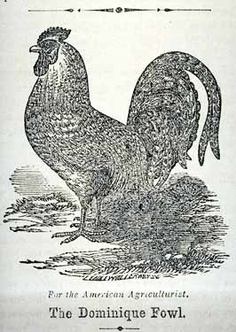
| 2007
to Present
As of 2007, they were once again beginning to decline. However, populations
may increase as more and more people become interested in self-sufficient
living and the preservation of heritage poultry.
This drawing is from 1886: "For the American Agriculturist. The Dominique
Fowl".
|
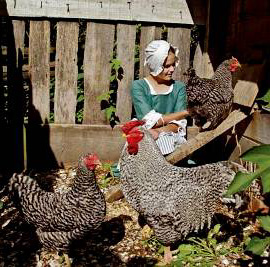
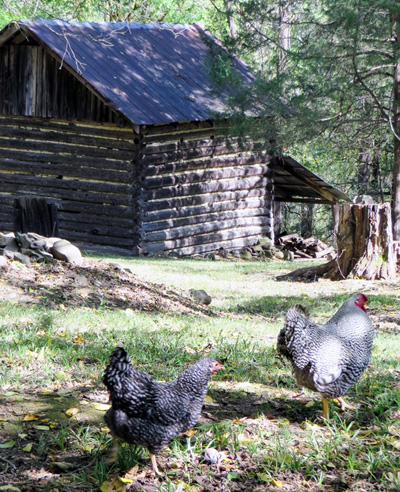

| Colonial
Williamsburg's Rare Breed Program
This Rare
Breeds program began in 1986 to preserve genetic diversity in livestock.
Based on historical research, the selected breeds represent animals that
would have been in Williamsburg, Virginia during the 1700s.
Breeds include the Dominique chicken, Nankin Bantam chicken, English Game
fowl, Leicester Longwool sheep, American Cream Draft horse, American Milking
Red Devon cattle, Durham Shorthorn cattle, and Devon/Lineback oxen.
"Dominiques were well suited to the colonial Virginia habitat because they
were medium to small in size with a very hardy constitution. Heavy plumage
protected the birds from the weather, and those with rose combs rarely suffered
from freezing winter temperatures. Their dark and light irregular barring
made them practically invisible when perched in brush or trees."
"Dominiques were fast growing in spite of having to forage for their food.
Their hens were often the first to lay fall and winter eggs and continued
without interruption throughout the winter. The usefulness of this special
breed did not go unnoticed by farm wives of long ago who valued them for
their feathers, meat, eggs, and for calm dispositions."
Colonial
Williamsburg's Rare Breeds Program
|
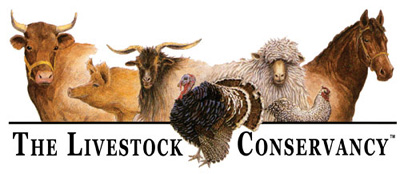
| Livestock
Breeds Conservancy
Dominiques
are categorized as 'Watch' on the Conservation Priority List of the American
Livestock Breeds Conservancy. 'Watch' means: "Fewer than
2,500 annual registrations in the United States and estimated global population
less than 10,000".
Their motto is: "Ensuring the future of agriculture through the genetic
conservation and promotion of endangered breeds of livestock and poultry".
|
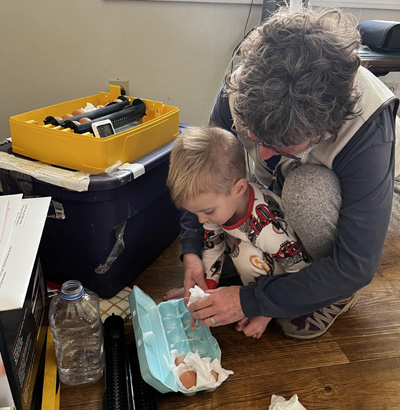
|
3 weeks later

"Just wanted to let you know our chicks are here! 9 hatched which is best percentage we have had. We did loose one that failed to thrive. The other 8 are doing great!"
-Laura, New Tazewell, Tennessee
Buy
Dominique Hatching Eggs
|










